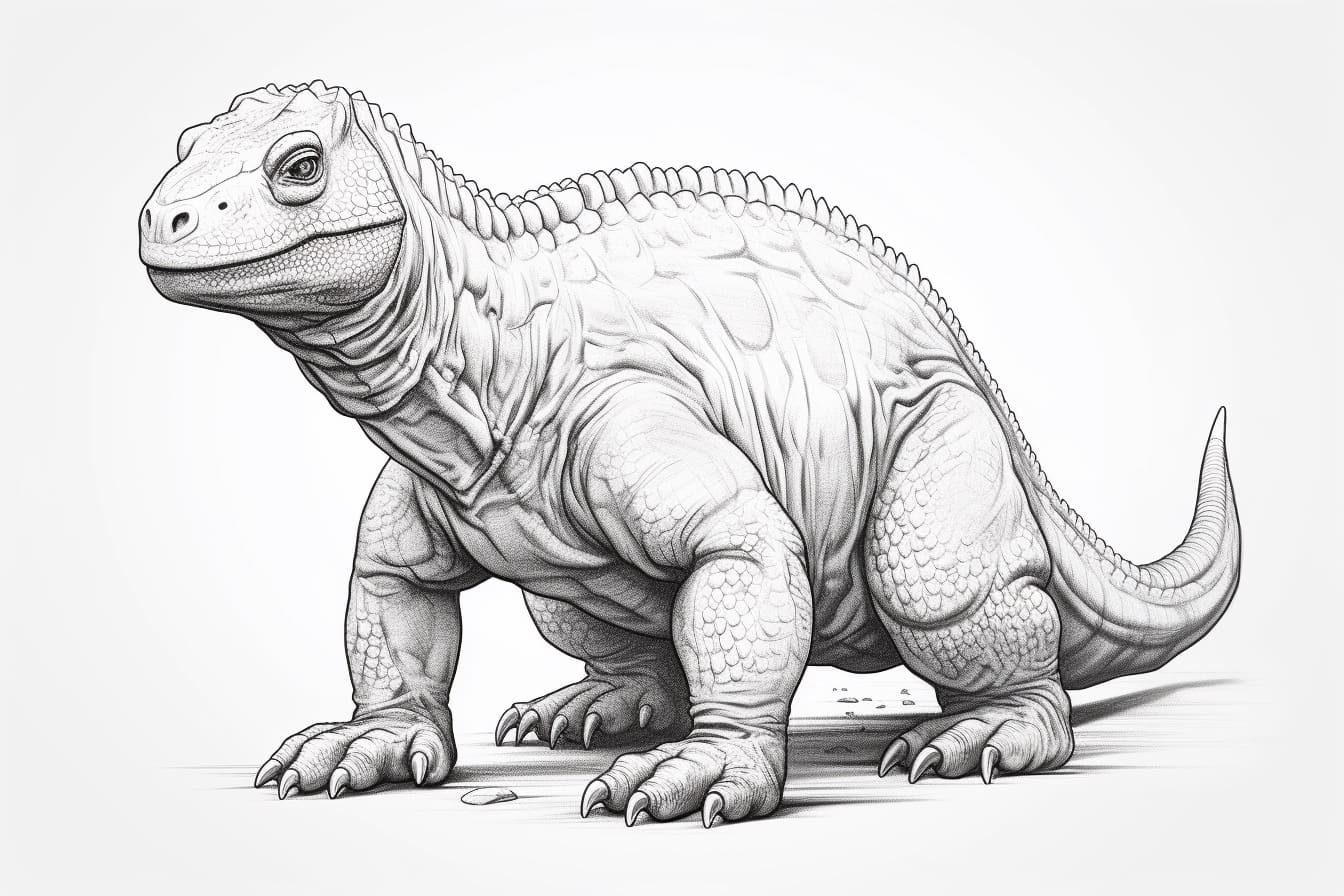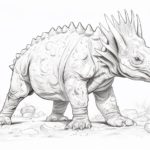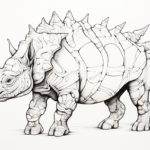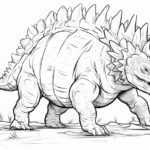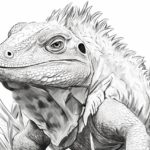Drawing Iguanodon, the iconic dinosaur from the early Cretaceous period, is a thrilling and educational experience for any budding artist or dinosaur enthusiast. With its distinctive spiky thumbs and powerful hind legs, the Iguanodon presents a unique and captivating subject for artists of all levels. By carefully studying its anatomy and features, you can bring this magnificent creature to life on paper, capturing its strength and majesty in your artwork. Join me on an artistic journey through time as we explore the world of Iguanodon and learn how to draw this fascinating dinosaur with skill and precision.
Materials Required
To draw an Iguanodon, you will need the following materials:
- Pencil: For sketching and outlining the basic shape of the dinosaur.
- Paper: To draw the Iguanodon on.
- Eraser: To correct any mistakes or lighten any unwanted lines.
- Colored pencils or markers: To add color and details to your drawing.
- Reference image: To use as a guide for the dinosaur’s features and proportions.
- Ruler: To help with drawing straight lines or measuring proportions accurately.
- Optional: Blending tool such as a blending stump or cotton swab for shading.
How to Draw an Iguanodon: a Step-by-step Guide
Step 1: Gather Your Materials
- Get a pencil, eraser, paper, and reference images of Iguanodon for accuracy.
Step 2: Sketch the Basic Shapes
- Start by drawing an oval for the body and a smaller oval for the head. Connect them with a curved line for the neck.
- Add a smaller oval for the hip area and connect it to the body with curved lines for the legs.
Step 3: Add Details to the Head
- Sketch a long, narrow snout for the Iguanodon’s head.
- Draw a small circle for the eye and a line for the mouth.
- Add a curved line for the crest on top of the head.
Step 4: Outline the Body
- Define the body shape by adding curves and contours to the initial ovals.
- Draw the front legs as thick, muscular limbs with sharp claws.
- Sketch the hind legs with a similar structure but longer and thicker to support the body.
Step 5: Include the Tail and Skin Texture
- Draw a long, tapering tail with a slight curve for balance.
- Add scales or bumpy textures to the skin of the Iguanodon for a realistic touch.
Step 6: Refine the Details
- Add smaller details such as the fingers on the front limbs and the toes on the hind limbs.
- Enhance the facial features like nostrils, teeth, and scales around the eye.
Step 7: Erase Guidelines and Finalize
- Go over your drawing, refining lines and adding any necessary details.
- Erase any initial guidelines and unnecessary marks to clean up the drawing.
- Consider shading to add depth and dimension to your Iguanodon drawing.
Step 8: Practice and Experiment
- Practice drawing different poses and angles of Iguanodon to improve your skills.
- Experiment with different techniques, such as using cross-hatching for shading or adding a background to your drawing.
Remember, drawing takes practice, so don’t be discouraged if your first attempt isn’t perfect. Keep refining your skills and have fun with the process!
Conclusion
In conclusion, drawing a Iguanodon can be a rewarding and educational experience for artists of all skill levels. By following the steps outlined in this article, you can create a realistic and detailed representation of this fascinating prehistoric creature. Remember to practice patience and attention to detail, and most importantly, have fun with the creative process. Happy drawing!
Fun Facts About Iguanodons
- Iguanodons were large herbivorous dinosaurs that lived during the Early Cretaceous period, around 125-110 million years ago.
- They were among the first dinosaurs to be scientifically described, with the first remains discovered in England in the early 19th century.
- Iguanodons were bipedal dinosaurs but could also walk on all fours, using their hands for feeding or support.
- One of the most distinctive features of Iguanodons was their thumb spike, which was thought to be used for defense against predators or for gathering food.
- Some scientists believe that Iguanodons may have traveled in herds, similar to modern-day herbivorous animals, for protection and social interaction.
- Iguanodons were relatively large dinosaurs, with some species reaching lengths of up to 33 feet (10 meters) and weighing several tons.
- Fossilized footprints of Iguanodons have been found in various locations around the world, providing insight into their behavior and movement patterns.
- It is believed that Iguanodons were able to chew their food, as they had robust jaws and teeth suitable for grinding tough plant material.
- The name “Iguanodon” means “iguana tooth” in reference to the similarity of their teeth to those of modern iguanas.
- Iguanodons were once thought to be quadrupedal, with their thumb spike used as a defensive weapon. However, it is now believed that they primarily walked on their hind legs and used their hands for feeding and other activities.
Suggestions for Scenes and Settings for Iguanodon Drawings
- Prehistoric Jungle: Imagine the lush greenery of a prehistoric jungle with towering ferns, ancient trees, and bubbling swamps. Place your Iguanodon in this dense and vibrant setting to showcase its natural habitat.
- Volcanic Landscape: Picture a rugged and fiery volcanic landscape with steaming vents, molten lava streams, and rocky terrain. Position your Iguanodon against this dramatic backdrop to create a sense of danger and adventure.
- Coastal Cliffs: Visualize the rugged cliffs of a prehistoric coastline, overlooking a vast ocean teeming with marine life. Place your Iguanodon on a cliff edge, gazing out at the horizon, capturing a sense of grandeur and majesty.
- Desert Oasis: Envision a tranquil desert oasis with palm trees, a shimmering pool of water, and sand dunes stretching into the distance. Place your Iguanodon in this peaceful setting, basking in the sun and enjoying the serenity of the desert.
- Mountain Pass: Imagine a narrow mountain pass flanked by towering peaks, rocky outcrops, and cascading waterfalls. Position your Iguanodon in this rugged terrain, navigating the treacherous path with grace and strength.
- Ice Age Tundra: Picture a frozen tundra landscape dotted with icy caves, snow-covered plains, and woolly mammoths roaming in the distance. Place your Iguanodon in this icy terrain, adapting to the harsh conditions with resilience and determination.
- Ancient Ruins: Visualize ancient ruins of a lost civilization, overgrown with vines and moss, hinting at a bygone era of glory and mystery. Position your Iguanodon amidst these crumbling structures, evoking a sense of history and wonder.
- Underground Cavern: Envision a hidden underground cavern filled with glowing crystals, stalactites, and mysterious rock formations. Place your Iguanodon in this ethereal setting, exploring the dark and magical depths of the earth.
- Alien Landscape: Imagine a surreal alien landscape with bizarre plants, colorful rock formations, and alien creatures roaming in the distance. Position your Iguanodon in this otherworldly setting, blending the familiar with the fantastical for a truly unique and imaginative scene.

